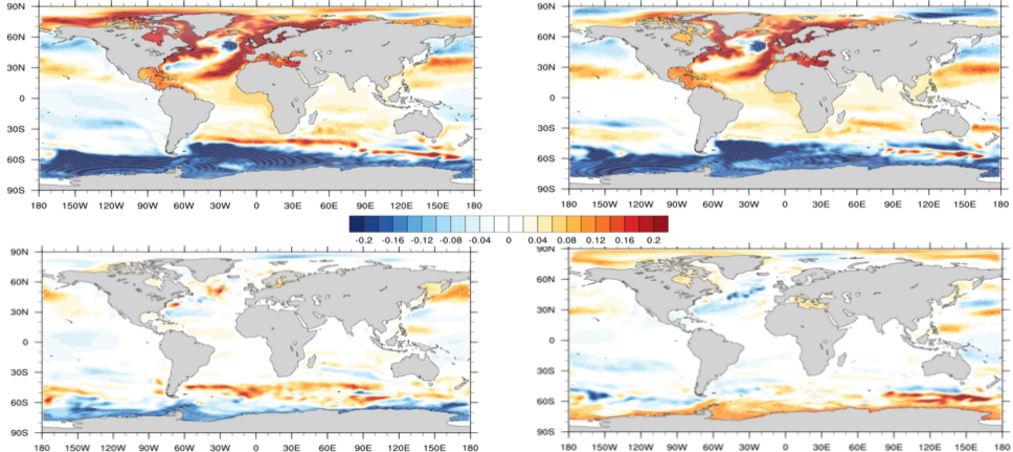DECVAR
Causes of Decadal to Centennial Regional Sea Level Variations (DECVAR)
Regional sea level is varying on a wide range of time scales. Respective large-scale variations on decadal to centennial time scale can easily be interpreted as, or even confused with, long-term trends when observed only during the instrumental record. But in reality they might result primarily from various climate modes superimposed onto an anthropogenic climate trend.
The study aims specifically at identifying causes for ongoing sea level variations taking into account various free (natural) climate modes as well as external forcing mechanism, including anthropogenic forcing. The goal is specifically to develop methods and knowledge that can be applied to regional sea level observations, which necessarily result from a single climate realization (as opposed to an ensemble mean) to quantify the anthropogenic signal and natural variability there.
For a better understanding of contemporary sea level changes in terms of natural dynamic modes versus anthropogenic influences, it is important to identify potential underlying forcing factors by focusing on the performance of specific sea level sensitivity experiments that will be conducted as part of the international FAFMIP effort run under the CMPI6 protocol. FAFMIP is proposed to support of the WCRP Grand Challenge on sea level rise and regional impacts.
We will perform and analyze specific sea level sensitivity using coupled Atmosphere-Ocean General Circulation models (AOGCM) runs, which will be performed as part of this effort using the MPI-ESM model driven by surface forcing anomalies targeted to identify the response of sea level to specific forcing functions. It will here specifically lead to insight into the forcing mechanism and its regional response under well-defined conditions: In the FAFMIP experiments, a prescribed set of surface flux perturbations will be applied to the ocean. These perturbations will be obtained from the ensemble-mean changes simulated at time of doubled CO2 by CMIP5 AOGCMs under the 1pctCO2 scenario, so they are representative of projected anthropogenic climate change.
Collectively, these experiments aim:
- to quantify the difference in the geographical patterns of sea level change due to ocean density and circulation change simulated by the models, when given common surface flux perturbations.
- to provide information about the efficiency and interior distribution of ocean heat uptake in response to climate change; the AOGCM spread in these phenomena contributes to their spread in transient climate response and global mean sea level rise due to thermal expansion.
- to provide information about the sensitivity of the Atlantic meridional overturning circulation (AMOC) to prescribed buoyancy forcing of the character expected for CO2 forcing, rather than idealized freshwater forcing such as has been used in previous AMOC intercomparisons; change in the AMOC is of relevance to both regional and global sea level rise, as well as to regional climate change.

